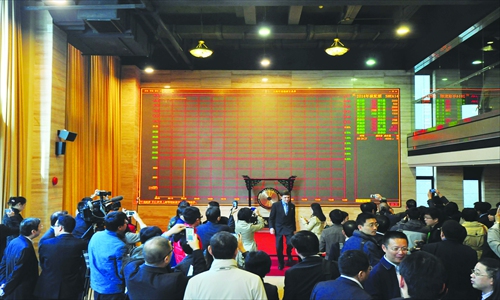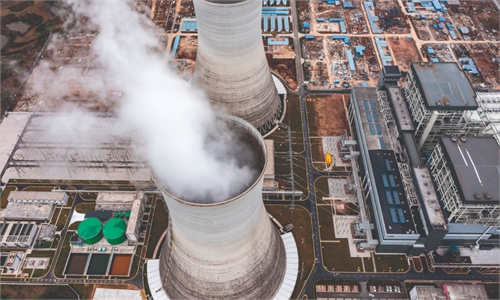
The opening ceremony for carbon trading at Shanghai Environment and Energy Exchange on Tuesday Photo: CFP
China's national carbon emissions trading market celebrated its third anniversary on Tuesday, a milestone in the country's efforts to combat global climate change.
According to the Ministry of Ecology and Environment, as of Monday, the market had handled more than 460 million tons of carbon emissions quotas with a total value of nearly 27 billion yuan ($3.7 billion), China Media Group reported.
The market has played a crucial role in promoting the green transformation of electricity enterprises, with the prices of carbon dioxide emissions per ton increasing from 40 yuan per ton at the very beginning to 90 yuan now, after peaking at more than 100 yuan.
This increase in carbon prices has incentivized many thermal power generating enterprises to enhance energy conservation and emissions control, analysts said.
"Price is a crucial signal for the carbon market. Rising prices suggest increased trading activity, and China is making progress in promoting a low-carbon industrial transition," Lin Boqiang, director of the China Center for Energy Economics Research at Xiamen University, told the Global Times on Tuesday.
The national carbon emissions trading market was launched on July 16, 2021, covering approximately 5.1 billion tons of carbon dioxide emissions annually and accounting for more than 40 percent of the total emissions nationwide. These figures make it the world's largest carbon market in terms of greenhouse gas emissions trading.
The establishment of a national carbon market is viewed a key policy tool for actively and steadily advancing carbon peaking and carbon neutrality, reflecting China's proactive response to curb climate change, analysts said.
China aims to peak carbon dioxide emissions by 2030 and achieve carbon neutrality by 2060.
This year's Government Work Report stressed that efforts will be made to expand the industry coverage of the national carbon market.
In the first half of this year, the Ministry of Ecology and Environment released draft guidelines for carbon emissions accounting, reporting and verification for the aluminum smelting and cement companies, marking an expansion of the market's coverage.
Global Times

